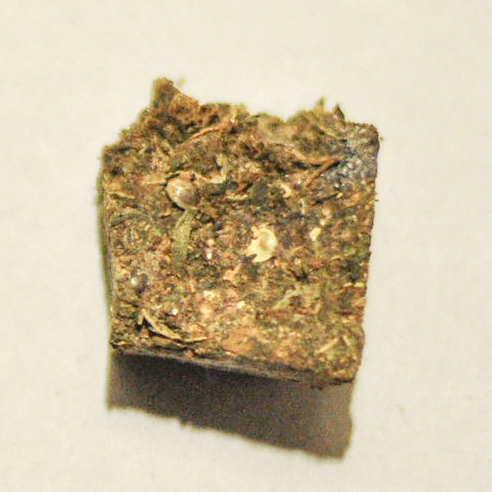What is Brick Weed
Unraveling the Enigma of Brick Weed: A Comprehensive Exploration
The diverse world of cannabis has birthed various strains and varieties, each catering to distinct tastes and preferences. Amid this vast spectrum, “brick weed” stands as a term often associated with compressed, low-quality marijuana. This article seeks to explore its historical roots, current existence, and the intricate details that define its place in the contemporary cannabis landscape.
History of Brick Weed
The inception of brick weed is intricately woven into the fabric of cannabis prohibition during the mid-20th century. This era, characterized by stringent legal measures against cannabis cultivation and distribution, set the stage for the clandestine birth of a distinct form of the plant: brick weed. As governments intensified their efforts to suppress cannabis-related activities, a shadowy world of innovative smuggling tactics and covert operations began to emerge.
Smugglers’ Predicament and Ingenious Solutions
Mid-20th century smugglers found themselves entangled in a web of legal challenges, particularly when it came to the cross-border transportation of cannabis. Faced with the need for discretion and efficiency, these illicit entrepreneurs devised a groundbreaking solution – the compression of marijuana buds into compact, brick-shaped packages.
This compression technique not only reduced the bulkiness of the cargo but also provided a practical solution to the difficulties of transportation across borders. The resulting dense bricks of cannabis became emblematic of a subversive industry, giving birth to the now-infamous term, “brick weed.”
Ingenious Packaging for Discreet Transportation
The compression of marijuana into brick form was not merely a utilitarian solution; it was a strategic maneuver to navigate the challenges posed by law enforcement. Smugglers took additional measures by tightly wrapping these cannabis bricks in plastic or other materials, further concealing the illicit cargo during transit. The distinctive appearance of these tightly packed, compressed bricks not only facilitated easy transport but also contributed to the nomenclature that would come to define a specific category of cannabis – brick weed.
The Moniker “Brick Weed” Takes Root
The name “brick weed” encapsulates the essence of this particular manifestation of cannabis. Coined in response to the method of compression and packaging, the term reflects the ingenuity of those involved in the illicit trade. The bricks, compacted for practicality and concealment, became synonymous with a form of cannabis that navigated legal challenges through innovation.
The history of brick weed, rooted in an era of prohibition, speaks to the resilience and resourcefulness of those engaged in the illicit cannabis trade. This chapter in the broader narrative of cannabis culture sheds light on the lengths to which individuals went to subvert legal restrictions, ultimately leaving an indelible mark on the way we perceive and discuss cannabis today.
Is There Still Brick Weed?
While brick weed was once prevalent, the evolving landscape of the cannabis industry has brought about significant changes. Legalization and regulation have led to the emergence of high-quality, carefully cultivated strains, diminishing the prevalence of brickweed in legal markets. However, in regions where cannabis remains illegal or faces strict regulations, brickweed may persist due to its discreet transportability and the lack of quality control in illegal markets.
THC and Other Cannabinoid Content of Brick Weed
One of the notable characteristics of brick weed is its generally lower potency compared to premium cannabis strains. THC, the psychoactive compound responsible for the euphoric effects of cannabis, tends to be lower, making it less desirable for those seeking a more potent experience. Additionally, the lack of proper cultivation practices in the production of weed compressed into bricks results in inconsistent cannabinoid profiles, leading to unpredictable effects for consumers.
The Rise of Craft Cannabis
As legal cannabis markets expand, there is a notable shift toward “craft cannabis.” This term refers to small-scale, artisanal cultivation practices that prioritize quality, unique genetics, and meticulous attention to detail. Craft cannabis cultivators focus on terroir, a concept borrowed from the wine industry, emphasizing the influence of environmental factors on the plant’s characteristics. This approach stands in stark contrast to the mass production and compression methods associated with brick weed.
The Importance of Quality Control
Quality control plays a pivotal role in the cannabis industry, directly influencing the user experience. Legal and regulated markets mandate testing for contaminants, pesticides, and accurate labeling of THC and CBD content. These measures ensure consumer safety and contribute to a more consistent and enjoyable cannabis experience. In contrast, brickweed, originating from illicit or unregulated sources, lacks the rigorous testing and quality assurance measures employed by legal and reputable cannabis producers.
The Future of Brick Weed
As more regions move towards cannabis legalization, the future of brick weed appears uncertain. Legal cannabis markets, with their emphasis on quality, safety, and variety, are likely to overshadow brickweed. However, until cannabis is fully legalized worldwide, brick weed may persist in areas with limited access to regulated products. The illegal status of cannabis in certain regions fuels an underground market where brickweed remains prevalent due to its practicality for illegal transportation.
The Impact of Legalization on Brick Weed
Global trends toward cannabis legalization significantly impact the prevalence of low quality weed. Legal markets, with their emphasis on quality and safety, are gradually pushing brickweed to the fringes. Legalization not only addresses safety concerns but also fosters economic opportunities, contrasting with the illicit trade associated with brick weed.
Quality Perception and Consumer Education
Consumer perception of quality has evolved in legal markets, where consumers are more informed and discerning. Dispensaries play a crucial role in educating consumers about the differences between high-quality cannabis and low quality weed, empowering them to make informed choices. Quality perception is closely tied to factors such as terpene profiles, cultivation methods, and overall aesthetic appeal, areas where brick weed often falls short.
Environmental and Societal Implications
The production and transportation methods associated with brick weed raise concerns about environmental and societal impact. The clandestine cultivation of cannabis often involves unsustainable practices, including the use of harmful pesticides and deforestation. Legalization provides an opportunity to implement environmentally friendly cultivation practices and reduce the environmental footprint of cannabis production.
The Role of Technology in Cannabis Cultivation
Technological advancements in cannabis cultivation have reshaped the industry, contributing to the production of high-quality, potent strains that outshine brick weed. State-of-the-art facilities equipped with advanced technology allow cultivators to optimize growing conditions, fostering the production of visually appealing and aromatic buds. These advancements further marginalize brick weed, rendering it less attractive to a growing population of discerning cannabis enthusiasts.
Conclusion: Navigating the Changing Landscape
In conclusion, brick weed’s existence in the cannabis landscape is intricately linked to legal and societal frameworks. The diminishing prevalence in legal markets reflects a broader shift toward quality, safety, and consumer education. The ongoing challenge is to strike a balance between addressing the legacy of prohibition, mitigating the environmental and societal impacts of illicit cultivation, and providing consumers with access to safe, high-quality cannabis products. Only through continued efforts in legalization, regulation, and education can the cannabis industry fully transcend the era of brick weed and embrace a future defined by diversity, quality, and responsible consumption.





Comments
Post a Comment